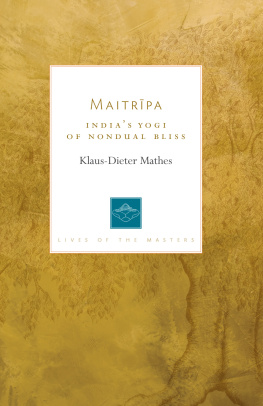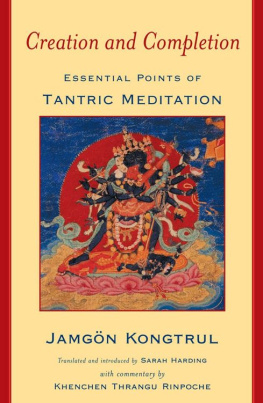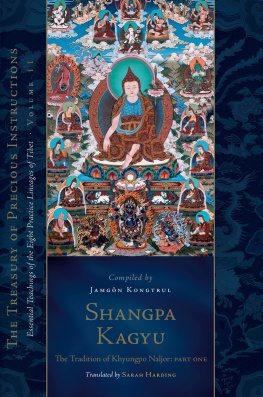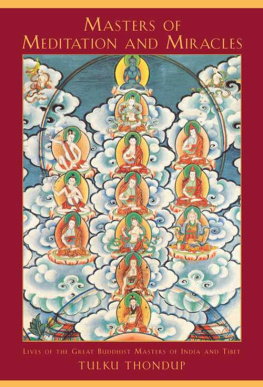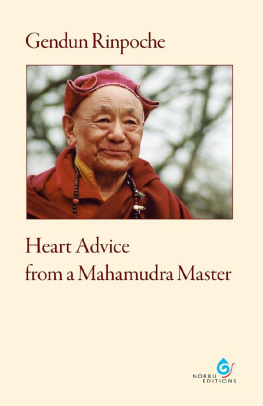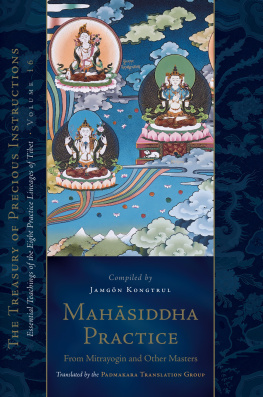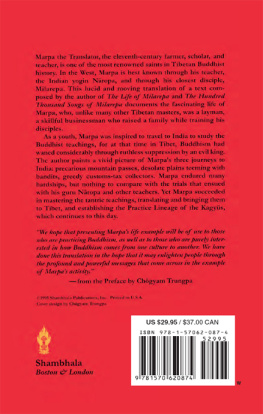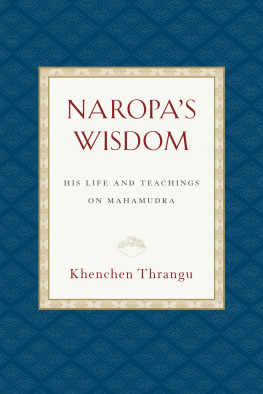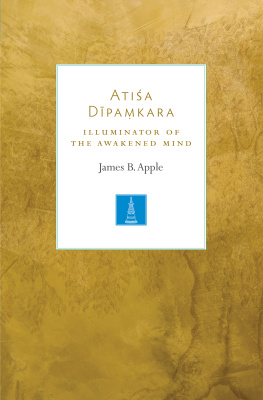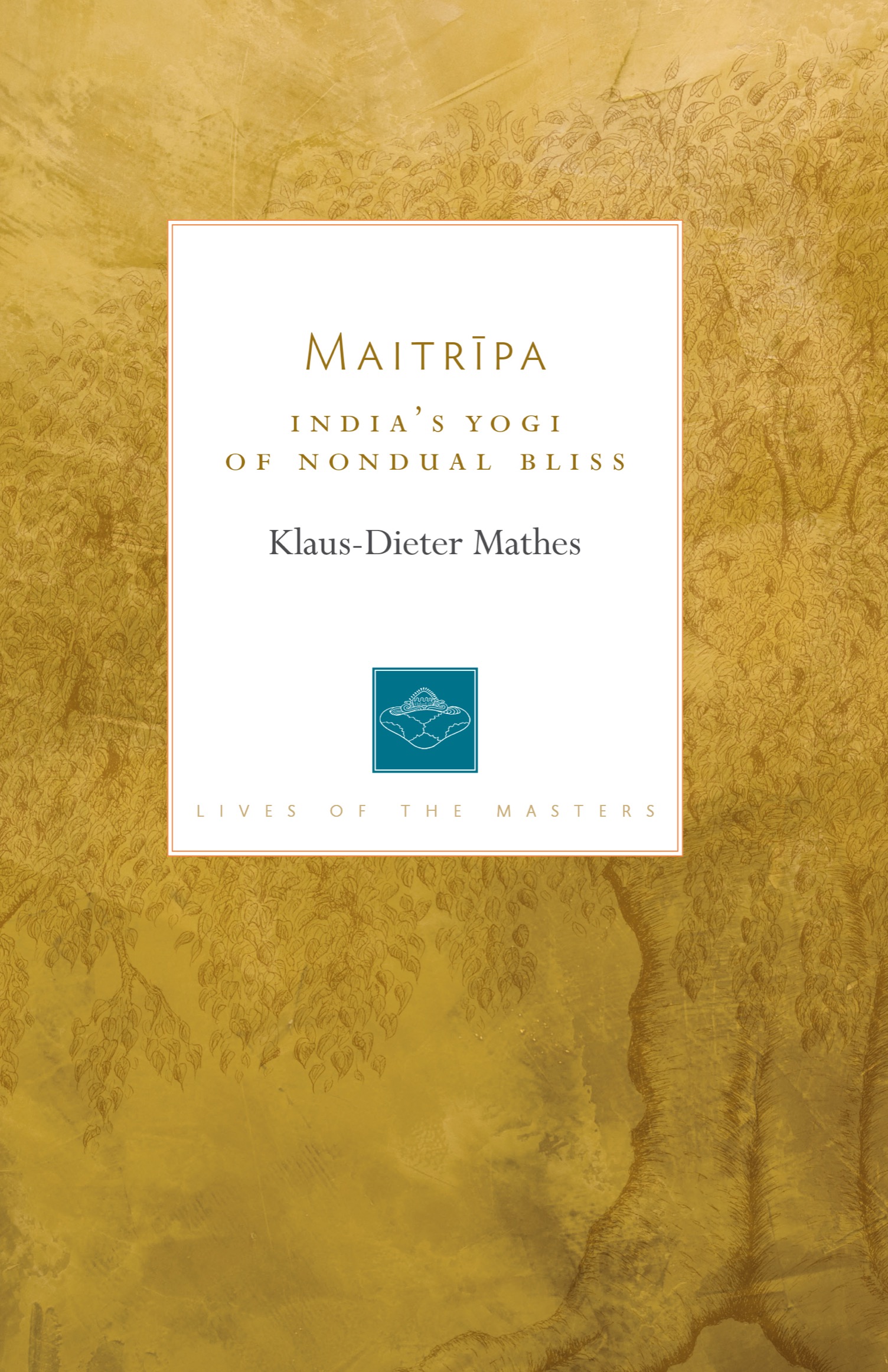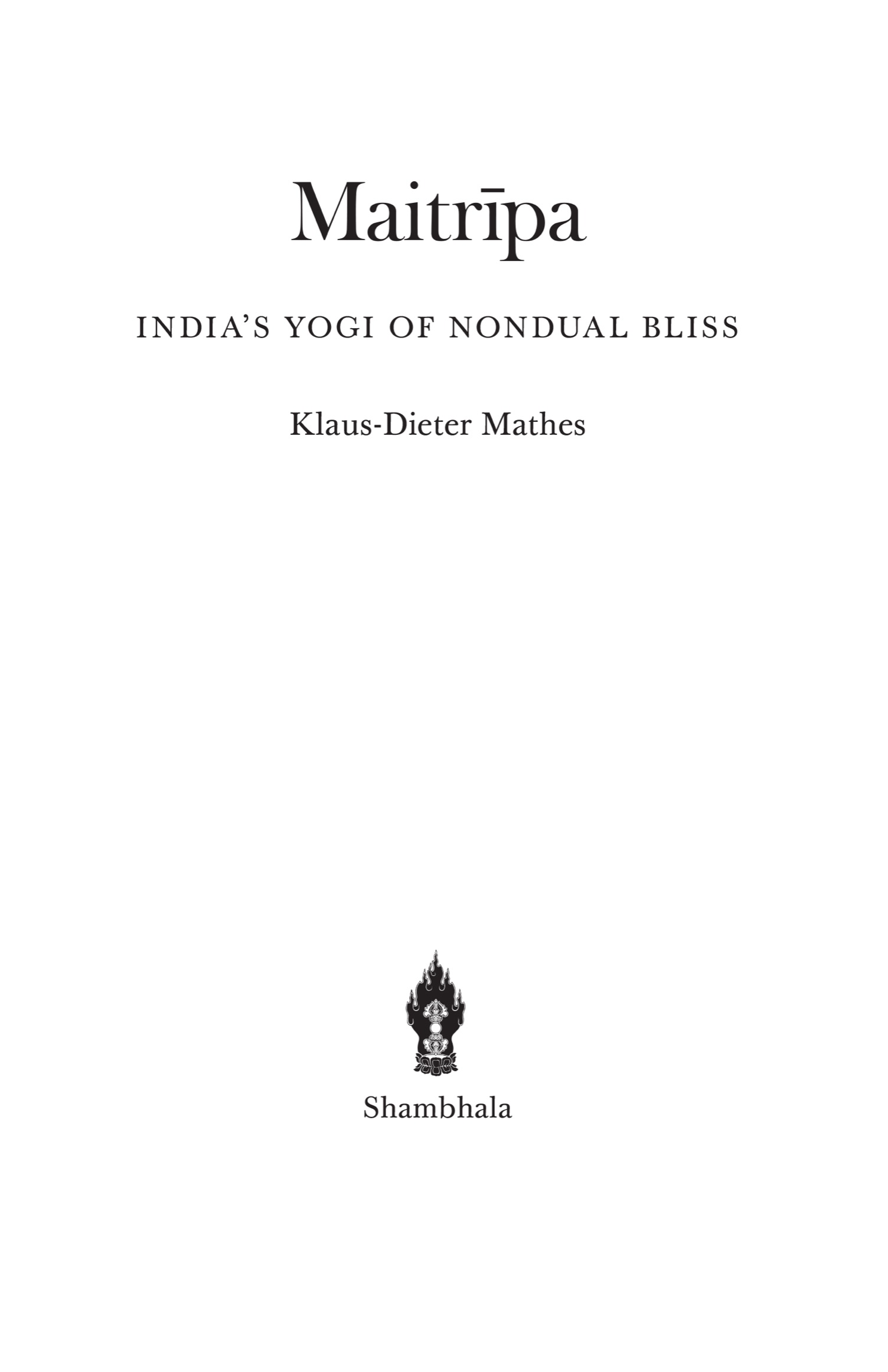Contents
Landmarks
Print Page List
Shambhala Publications, Inc.
2129 13th Street
Boulder, Colorado 80302
www.shambhala.com
2021 by Klaus-Dieter Mathes
Frontispiece of Maitripa Tsadra Foundation
Cover art: Robert Fenwick May, Jr.
Cover design: Gopa & Ted2, Inc.
All rights reserved.
No part of this book may be reproduced in any form or by any means, electronic or mechanical, including photocopying, recording, or by any information storage and retrieval system, without permission in writing from the publisher.
For more information please visit www.shambhala.com.
LIBRARY OF CONGRESS CATALOGING - IN - PUBLICATION DATA
Names: Mathes, Klaus-Dieter, author.
Title: Maitripa: Indias Yogi of Nondual Bliss / Klaus-Dieter Mathes.
Description: Boulder: Shambhala, 2021. | Series: Lives of the masters |
Includes bibliographical references and index.
Identifiers: LCCN 2020048709 | ISBN 9781611806700 (trade paperback)
eISBN 9780834843981
Subjects: LCSH: Mahmudr (Tantric rite) | Advayavajra, active approximately 11th century. | Emptiness (Philosophy) | SiddhasBiographyEarly works to 1800. |
Tantric BuddhismIndiaEarly works to 1800. |
Buddhist LiteratureTranslations into English.
Classification: LCC BQ 7699. M 34 M 38 2021 | DDC 294.3/925092dc23
LC record available at https://lccn.loc.gov/2020048709
a_prh_5.8.0_c0_r0
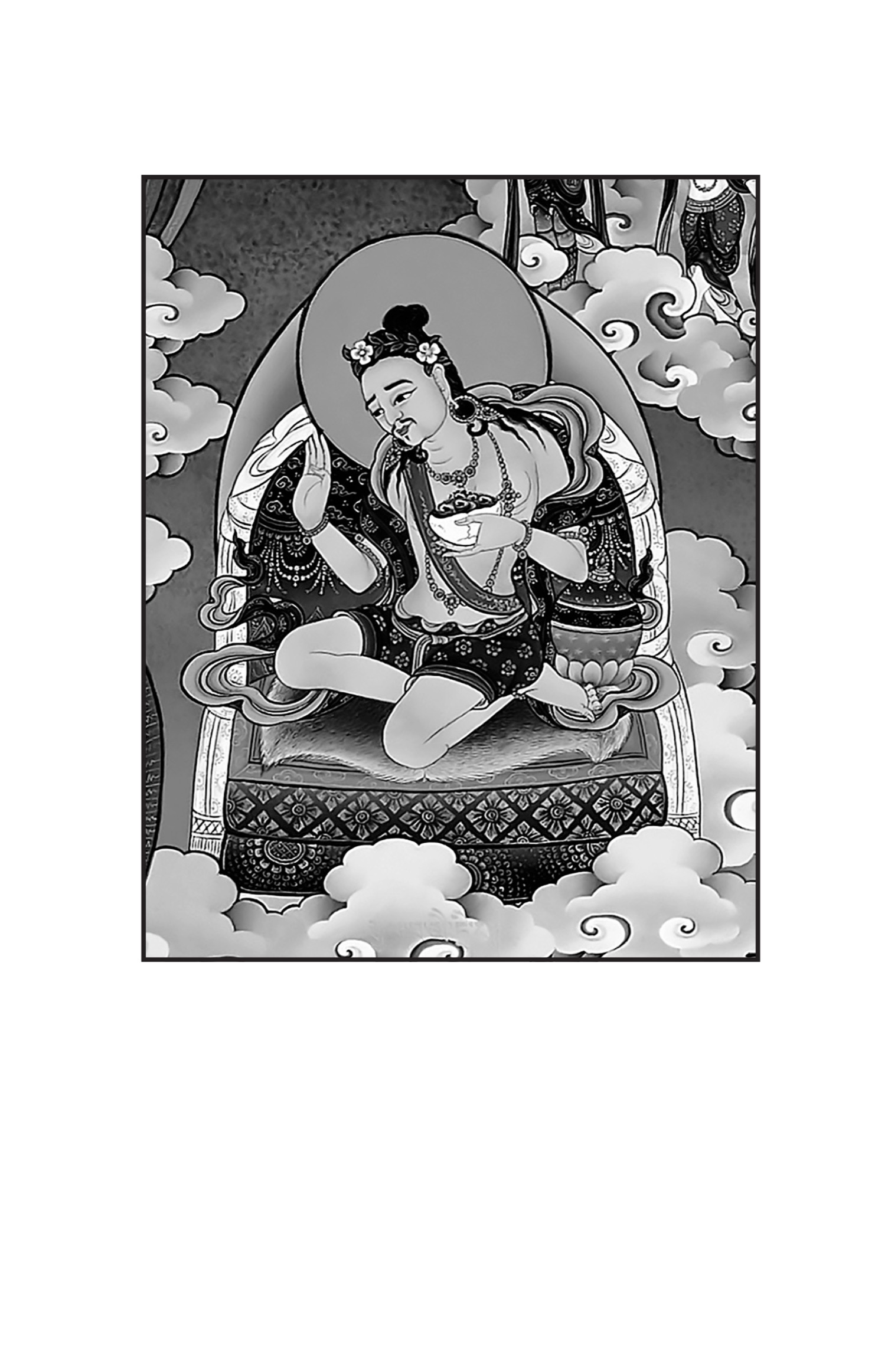
Series Introduction
B UDDHIST TRADITIONS are heir to some of the most creative thinkers in world history. The Lives of the Masters series offers lively and reliable introductions to the lives, works, and legacies of key Buddhist teachers, philosophers, contemplatives, and writers. Each volume in the Lives series tells the story of an innovator who embodied the ideals of Buddhism, crafted a dynamic living tradition during his or her lifetime, and bequeathed a vibrant legacy of knowledge and practice to future generations.
Lives books rely on primary sources in the original languages to describe the extraordinary achievements of Buddhist thinkers and illuminate these achievements by vividly setting them within their historical contexts. Each volume offers a concise yet comprehensive summary of the masters life and an account of how they came to hold a central place in Buddhist traditions. Each contribution also contains a broad selection of the masters writings.
This series makes it possible for all readers to imagine Buddhist masters as deeply creative and inspired people whose work was animated by the rich complexity of their time and place and how these inspiring figures continue to engage our quest for knowledge and understanding today.
K URTIS S CHAEFFER , series editor
Contents
Preface
Somebody who wishes to know suchness does not find it
In the Yogcra tenets;
Even Madhyamaka, which is not adorned
With the words of a guru, is only middling.
M AITRPA , Ten Verses on True Reality
Maitrpa wished to compose pramit-based pith instructions that accord with the system of the secret mantra
S AHAJAVAJRA , introduction to his
Ten Verses on True Reality commentary
Here, mahmudr stands for the pith instructions on the reality of Mahmudr
S AHAJAVAJRA , commentary on the
Ten Verses on True Reality, verse 7
T HESE LINES nicely reflect Maitrpas essential quality: as a genuine master of Mahmudr and emptiness, he could impart Madhyamaka teachings in terms of special pith instructions in such a way that qualified disciples could gain an immediate realization of realitys luminosity. It is precisely this direct access to the reality of Mahmudr that upgrades ordinary pramit-based teachings to the level of the mantra system. One could compare this approach to a mind-to-mind transmission on par with formal tantric empowerment.
Back in the 80s, when some of my Dharma friends were planning to join the first three-year retreat in Halscheid, Germany, I was told that, following the Maitrpa lineage, it was also possible to practice Mahmudr on the basis of a special form of amatha and vipayan that does not depend on the six dharmas of Nropa. A direct realization of ones true nature of mind would not only be possible through formal tantric empowerment and practice in a three-year retreat, but also in a direct mind-to-mind transmission of realization that can happen, for example, through special pith instructions on otherwise exhausting philosophical texts. Maitrpas Ten Verses on True Reality (Tattvadaaka) are enhanced by such instructions (as implied by verse 2) and open up, according to Maitrpas disciple Sahajavajra, a not-specifically-tantric access to Mahmudr. I vividly remember Khenpo Tsultrim Gyatsho Rinpoches inspiring explanations of logic, Madhyamaka, and the Maitreya works that amounted to something similar to what must have been happening during such pith instructions.
Having written my doctoral thesis on Maitreyas Distinguishing the Phenomenal World of Mental Representation from the True Nature of Phenomena (Dharmadharmatvibhga) and my second book on the Sublime Continuum (Uttaratantra), Maitrpa returned to my radar, as both of these Maitreya works are said to have been discovered and transmitted by Maitrpa. My study of the Sublime Continuum (better known as Ratnagotravibhga among Indologists) was mainly based on a newly discovered commentary by G Lotswa Zhnnu Pel (13921481) on this standard Indian treatise on buddha nature, in which Maitrpas Ten Verses on True Reality and Sahajavajras commentary are repeatedly adduced in support of Stra Mahmudr. As the Ten Verses on True Reality and its commentary are intimately interwoven with the so-called amanasikra (nonconceptual realization) cycle of Maitrpas works, I embarked on a follow-up research project on Maitrpa, and prepared a critical edition and translation of the amanasikra cycle. The result of my endeavor was published in 2015 by the Austrian Academy of Sciences Press under the title A Fine Blend of Mahmudr and Madhyamaka: Maitrpas Collection of Texts on Nonconceptual Realization (Amanasikra).
Having realized the importance of Maitrpa for the Kagy schools and given the notorious understatement and even neglect of his contribution in the Western reception of Mahmudr, I felt compelled to make my translation and analysis of Maitrpas amanasikra cycle more accessible and spread it to a broader audience. This new contribution on Maitrpa in the Lives of the Masters series will also serve the more practice oriented, as Maitrpa so elegantly blends Madhyamaka with Mahmudr approaches. In the spirit of Maitrpa, the conceptual approach of the ascending tenet systems is reduced here to what is absolutely needed for a practitioner of Mahmudr: the effective deconstruction of any model of reality. As no such model has ever been found to withstand critical analysis, the only chance the yogin or yogin has is then to leave all conceptual assessment of true reality behind and open up to a Mahmudr path of tantric creation and completion stage practice and/or directly realizing ones luminous nature in an immediate mind-to-mind transmission with the guru. Maitrpa thus laid out a fascinating practice system that combines the profound Madhyamaka view of nonabiding or non-foundationalism (

